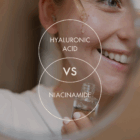Table of Contents:
The Quick Answer (But There’s More to the Story)
Time to Geek Out: The Science Behind Hyaluronic Acid
The Real Twist: Unmasking the Actual Pore-Clogging Culprits
Hydration and Pore Size: Can Hyaluronic Acid Visibly Shrink Pores?
Your HA Survival Strategy (Don’t Skip This Step)
Should You Stop Using Hyaluronic Acid?
Our Top Picks
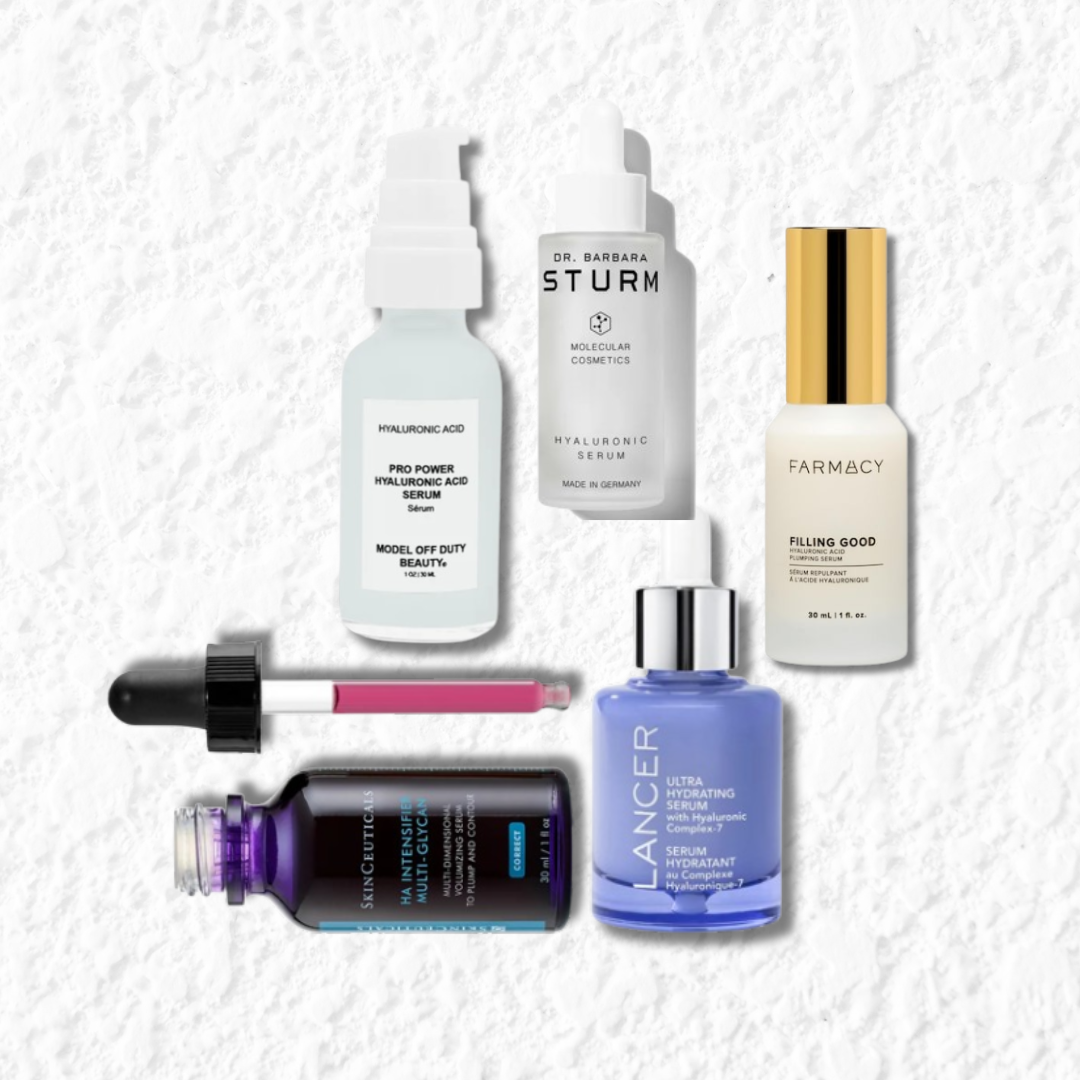
Time to Set the Record Straight
There’s a buzz making rounds in the skincare world. A quiet claim that hyaluronic acid, the go-to hydration hero, might secretly be clogging pores.
Yes, we’re talking about the same serum you picked up for that plump, dewy, “I’m glowing from within” look. Could this skincare favorite actually be working against your skin?
We’re diving deep into the science to clear things up. No vague claims or overhyped marketing. Just the facts. By the end of this, you’ll be the go-to skincare guru in your circle, ready to bust myths with confidence.
Get ready, because the truth might just surprise you.
The Quick Answer (But There’s More to the Story)
Let’s clear the air right away: No, hyaluronic acid does not clog pores.
In its pure form, it simply doesn’t have it in its nature. It’s classified as “non-comedogenic,” a scientific term for ingredients that don’t cause comedones, which is just a clinical way of saying clogged pores like blackheads and whiteheads.
So why the panic? Why is this question popping up in late-night searches after a surprise breakout?
Because while hyaluronic acid is clean, it sometimes gets caught up in the mess made by its not-so-innocent companions. The real troublemaker? It’s usually something else hiding in the ingredient list, and we’re about to uncover who’s actually to blame.
Time to Geek Out: The Science Behind Hyaluronic Acid
Before we go pointing fingers, let’s break down what HA actually is. It’s not some mystical gel that randomly makes your skin glow, it’s pure scientific brilliance at work. Understanding how it functions at a molecular level is the key to seeing why it’s not the villain in your skincare routine.
Hydration Hero, Not a Pore-Clogging Villain
Let’s talk about what actually clogs pores. Usually, it’s a mix of excess oil, dead skin cells, and general buildup basically, a sticky mess that forms a plug and blocks your pores like a traffic jam under your skin.
Hyaluronic acid doesn’t belong anywhere near that mess. It’s in a whole different category. It’s a humectant, meaning its main job is to attract and hold water.
Think of HA as a tiny, super-thirsty sponge. Just one molecule can hold up to 1,000 times its weight in water. It draws in moisture from the air or from deeper layers of your skin and locks it in at the surface.
It’s water-based, light, and smooth not oily or waxy. It doesn’t have the sticky texture needed to jam up your pores. Trying to block a pore with HA is like trying to plug a sink with mist. It’s just not how it works. Its role is to hydrate and plump your skin not smother it.
The Molecular Weight Mystery, Explained
Now here’s where the science gets really interesting. Not all hyaluronic acid is the same it comes in different molecular sizes, and yes, that actually makes a big difference.
- High Molecular Weight (HMW) HA -These are the larger molecules. They’re too big to sink into your skin, so they stay on the surface and create a lightweight, breathable layer of hydration. Picture it as an invisible moisture veil that smooths, plumps, and protects without getting anywhere near your pores. Simply put, they’re too large to clog anything.
- Low Molecular Weight (LMW) HA– These are the smaller guys. Their compact size lets them absorb a bit deeper into the upper skin layers, giving you a hydration hit from within. But don’t worry just like their larger counterparts, these molecules are still all about water. No oil. No dead skin. No chance of creating a sticky, pore-blocking mess.
So whether we’re talking big or small, hyaluronic acid is built to hydrate, not congest. The science makes it clear this ingredient is not the villain of the story.
The Real Twist: Unmasking the Actual Pore-Clogging Culprits
If your HA serum seems to be triggering breakouts, the spotlight shouldn’t be on hyaluronic acid itself it’s time to take a closer look at what’s around it.
HA doesn’t exist solo in that bottle. It’s one ingredient in a carefully crafted formula. And more often than not, that’s where the real problem begins.
The Issue Isn’t HA, It’s the Ingredients Tagging Along
This is your moment to level up. Time to become the kind of skincare-savvy pro who doesn’t just trust the front label. Flip the serum over and scan the ingredient list. That’s where the real story lives.
Here are some common companions of hyaluronic acid that might be the real culprits behind your skin acting up:
- Heavy Silicones– Look out for ingredients that end in “-cone,” like Dimethicone. These are often added to serums to create that silky, velvety texture we all love. And for many skin types, they’re totally harmless. But if you’re acne-prone, it’s a different story. These silicones can form a seal over the skin, almost like a layer of plastic wrap. While that might help lock in moisture, it can also trap sweat, oil, and dead skin cells underneath. And that trapped buildup? It’s a recipe for breakouts.
- Pore-Clogging Oils and Butters– To make products feel extra nourishing, brands often add plant-based oils and butters. While some of them are perfectly fine, others are known troublemakers for sensitive or acne-prone skin. If you’re prone to breakouts, watch out for ingredients like Coconut Oil, Cocoa Butter, or Wheat Germ Oil, especially if they’re listed near the top.
- Texture-Boosting Thickeners and Emulsifiers – Ingredients that help serums feel smooth and creamy, such as Carrageenan or Isopropyl Myristate, can be problematic for certain skin types. Though great for texture, they tend to rank high on the comedogenic scale, meaning they can easily clog pores.
So here’s the real story: your hyaluronic acid is doing exactly what it should, pulling in moisture and keeping your skin hydrated. But while it’s playing hero, some of its formula buddies might be setting the stage for breakouts. It’s not HA’s fault; it’s just in the wrong crowd.
Hydration and Pore Size: Can Hyaluronic Acid Visibly Shrink Pores?
Here’s something that might surprise you. Hyaluronic acid doesn’t just avoid clogging pores; it can actually help reduce how large they appear.
Yes, really. Here’s why?
Pores aren’t doors; they don’t open or close. But their visibility can shift depending on your skin’s hydration levels.
When your skin is dry or dehydrated, it loses its firmness and elasticity. This makes the surface appear saggy and uneven, causing the edges of your pores to stretch and look more pronounced, like a parched plant that’s lost its bounce.
Now here’s where hyaluronic acid steps in.
It works by deeply hydrating your skin cells, giving them that much-needed moisture boost. As a result, your skin looks fuller, firmer, and more supple from within.
This boost in volume creates a smoothing effect on the skin’s surface. The area around each pore becomes tighter and more lifted, making the pores themselves appear smaller and less obvious. It’s not that your pores are physically shrinking; it’s just that your skin looks so fresh and plumped, and the difference is striking. Think of it as a hydration-powered illusion.
Your HA Survival Strategy (Don’t Skip This Step)
Applying hyaluronic acid isn’t as simple as just layering it on. If you want to get the most out of it and keep your pores clear, you’ve got to understand how it behaves in different environments. Especially when it comes to moisture in the air.
This is one of those advanced skincare tips that can seriously level up your routine.
The Humidity Advantage
When you’re in a humid climate like during sticky summer days or while lounging in a tropical paradise, hyaluronic acid truly shines. With plenty of moisture floating in the air, HA can do what it does best: pull that hydration in and send it straight to your skin. It’s the perfect environment for HA to work at full power, keeping your skin plump and dewy all day long.
The Dry Climate Trap
Here’s where things take a turn. In low-humidity environments, think deserts, airplane cabins, or heated indoor spaces, there’s barely any moisture in the air for hyaluronic acid to grab onto.
So what does it do? It looks for the next best source: the deeper layers of your skin.
HA can start drawing water from within your dermis, pulling it toward the surface only for that moisture to evaporate into the dry air. This process, known as transepidermal water loss, can leave your skin feeling even drier than before you applied the product.
And dehydrated skin? It tends to go into overdrive, producing excess oil to make up for the lost moisture, which, in turn, can lead to clogged pores.
Smart Skincare: Making Hyaluronic Acid Work in Any Climate
No need to worry. You can easily stay ahead of the weather with just two essential steps.
- Always Apply on Damp Skin– Hyaluronic acid works best when it has water to work with. Applying it to completely dry skin? That’s a missed opportunity. After cleansing, make sure your skin is still slightly damp or give it a quick mist with a hydrating spray. This gives the HA molecules a ready source of moisture to latch onto, rather than pulling water from within your skin.
- Lock It In with Moisture– Once the serum is on, follow up immediately with a moisturizer. Don’t delay. This step is key. Your moisturizer helps trap the hydration HA just absorbed, creating a protective layer that keeps the moisture in. If you use facial oils, this is a good time to layer those on, too. Together, they help prevent water loss and ensure your skin stays plump, hydrated, and happy no matter the climate.
Should You Stop Using Hyaluronic Acid?
Definitely not. That would be like letting go of your top performer just because someone else in the team is causing problems.
Hyaluronic acid remains one of the most trusted and effective skincare ingredients out there. It’s a true hydration hero, gentle enough for sensitive skin, yet powerful enough to support even oily and acne-prone types.
The solution isn’t to eliminate it, but to use it wisely.
- Be Ingredient Aware– Take a closer look at the full ingredient list on your product. Is hyaluronic acid surrounded by heavy silicones, pore-clogging oils, or other problematic additives? Aim for a clean, well-balanced formula where HA is allowed to shine without interference from ingredients that might trigger breakouts.
- Use It the Right Way– Are you applying your HA serum on damp skin and following up with a moisturizer right after? If not, you could be missing out on its full benefits or even drying your skin out in the wrong conditions. Technique matters as much as the formula.
Hyaluronic acid was never the problem. The real culprit is confusion and formulas that don’t do your skin any favors. But now, you’ve got the knowledge to spot the difference.
You’re in charge of your skincare journey. So go ahead, embrace the glow, knowing your pores are in good hands.
Our Top Picks
1. MODEL OFF DUTY BEAUTY
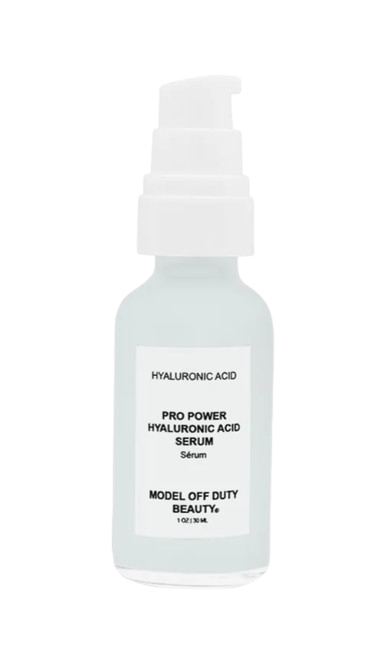
Model Off Duty Beauty Pro Power Hyaluronic Acid Serum ($39) size: 1 oz
Step into the realm of hydration with Pro Power Pure Hyaluronic Acid Serum, delivering intense hydration and promoting plump, youthful skin. Infused with pure hyaluronic acid, it enhances skin elasticity and diminishes the appearance of fine lines and wrinkles. The lightweight formula absorbs quickly, leaving your skin supple and rejuvenated.
2. LANCER SKINCARE
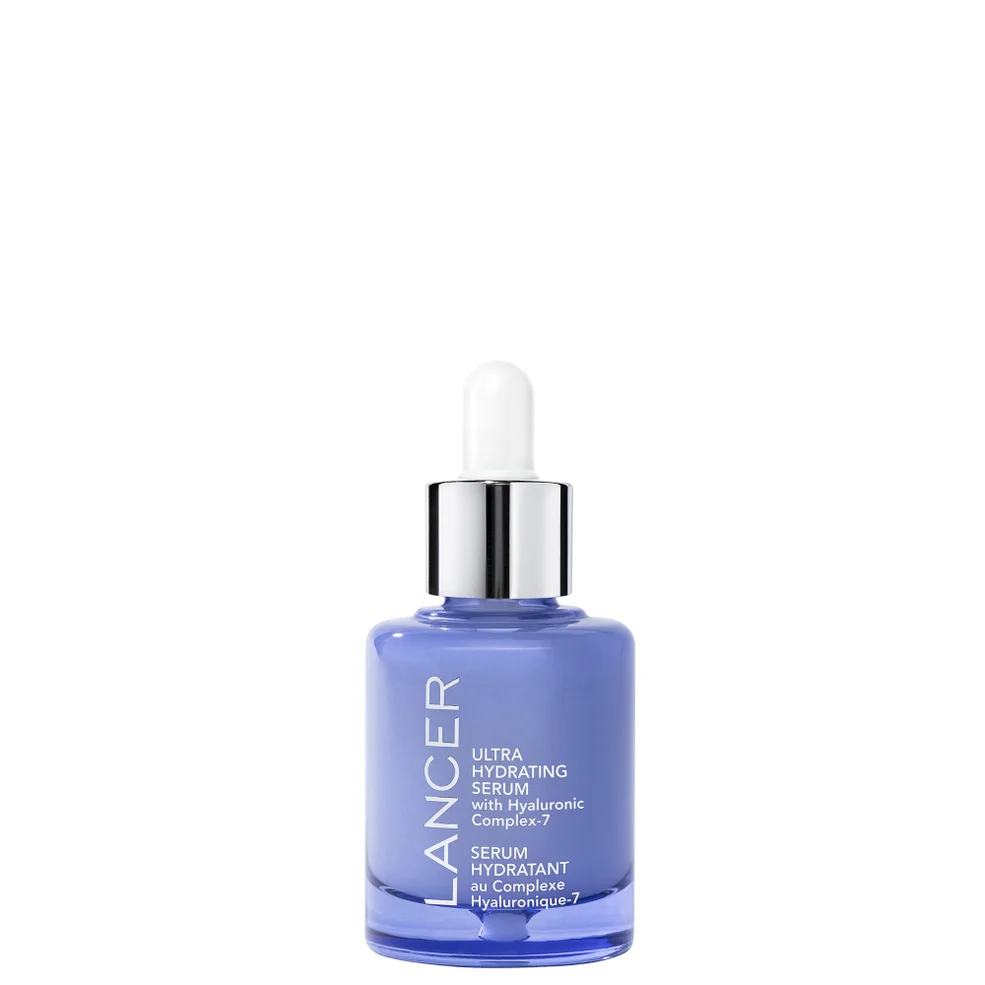
Lancer Skincare Ultra Hydrating Serum with Hyaluronic Complex-7 ($95) size: 1 oz
This lightweight emulsion combines oils to nourish and protect the top layers of skin, lock in natural moisture and prevent water evaporation, with water actives to nourish and rejuvenate skin from below the surface layers.
3. FARMACY

Farmacy Filling Good Hyaluronic Acid Plumping Serum ($52) size: 1 oz
Formulated with a next-generation, full-spectrum hyaluronic acid designed to penetrate the skin more effectively for quick & long-term visible plumping and hydration. Vegan collagen peptides and encapsulated thyme visibly smooth lines and wrinkles.
4. SKINCEUTICALS
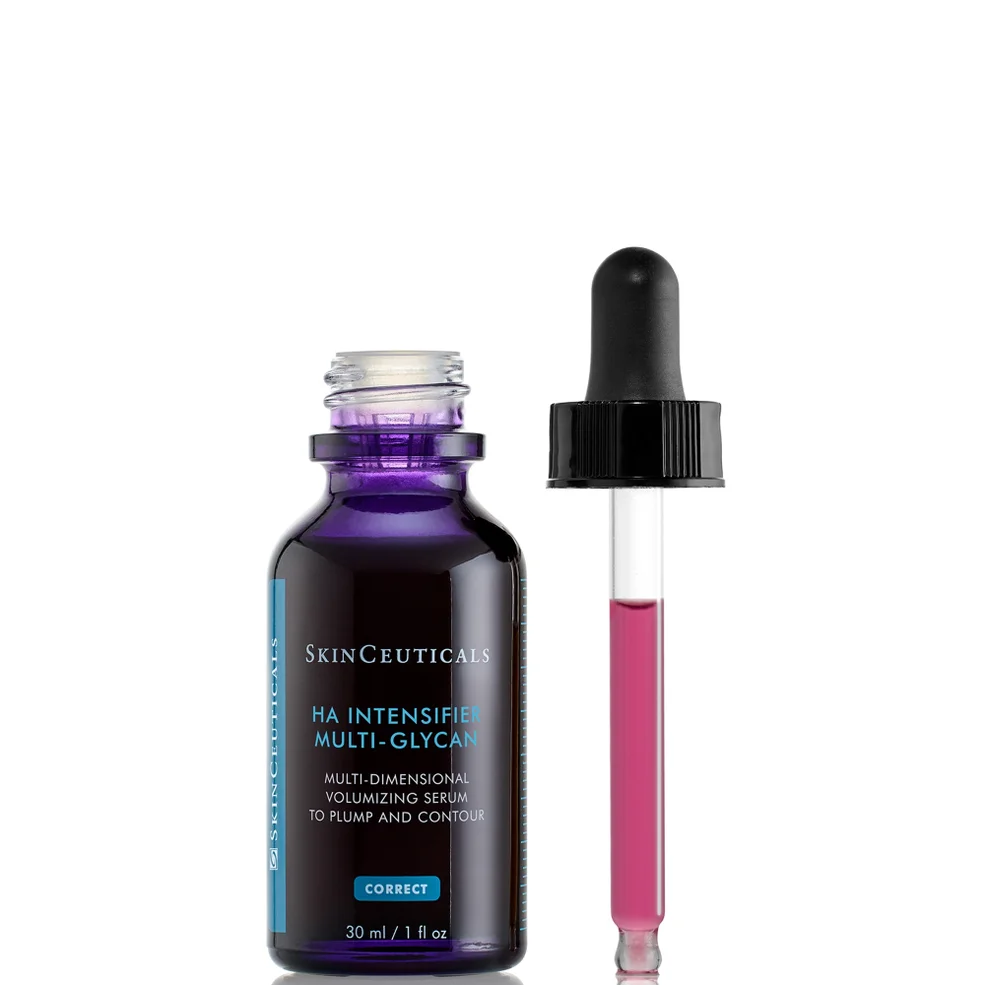
SkinCeuticals H.A. Intensifier Multi-Glycan ($120) size: 1 oz
This HA Intensifier Multi-Glycan advanced formula provides next level results designed to complement the latest in dermal filler technology. HA Intensifier Multi-Glycan has the same efficacy as its predecessor, but with a new and better formula for multi-dimensional correction. This formula stimulates and enhances skin plumping glycans to hydrate plump and contour.
5. DR. BARBARA STURM
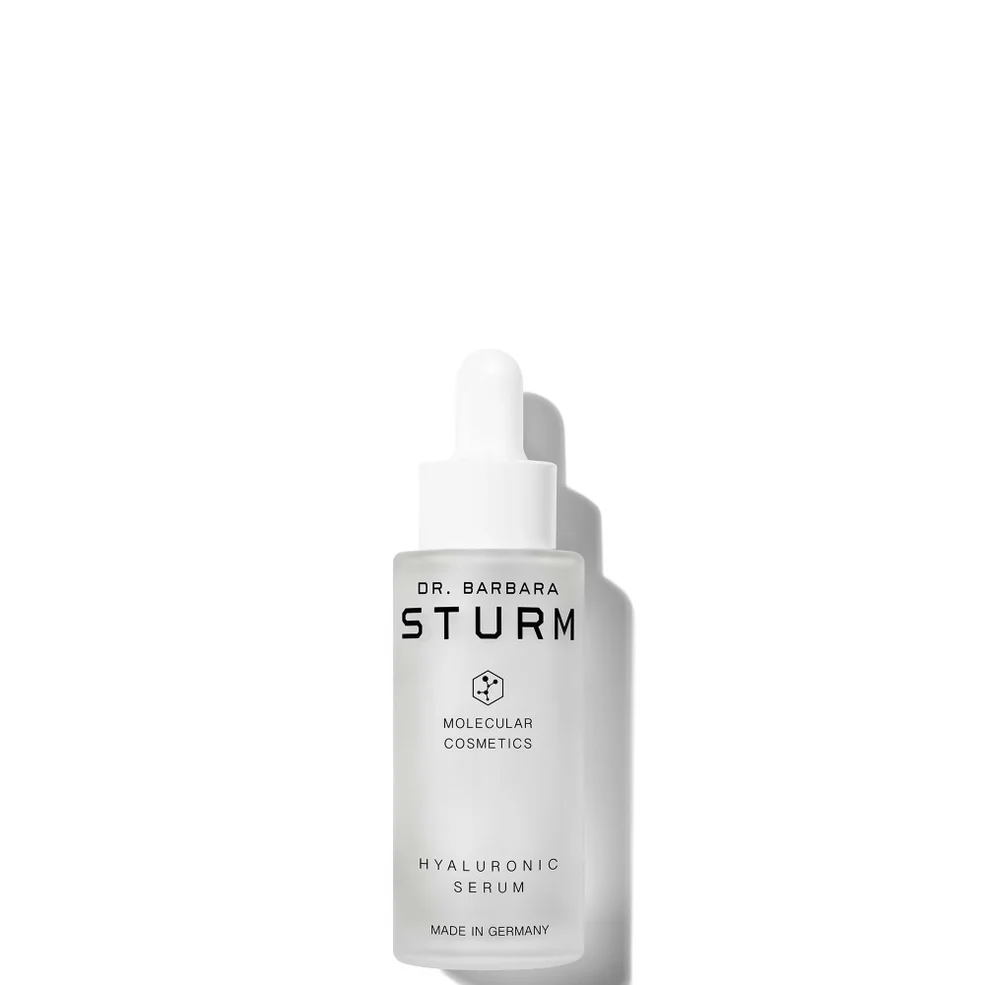
Dr. Barbara Sturm Hyaluronic Serum ($325) size: 1 oz
Packed with an optimal concentration of low and high-weighted Hyaluronic Molecules, it provides instant hydration at the surface and deeper skin layers. The low molecular weight Hyaluronic Acid penetrates deeper skin layers, leaving skin feeling firmer, refreshed, and visibly more radiant for the long term.

